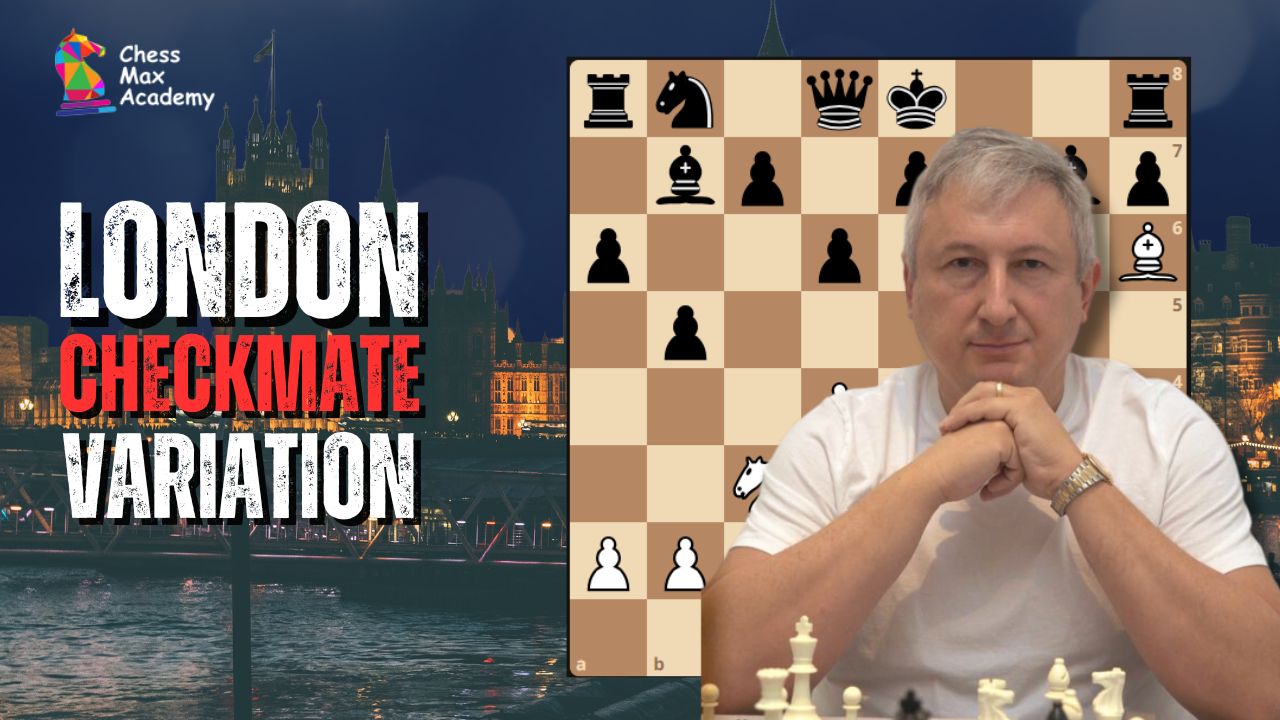The London System against the King’s Indian Defense provides a solid yet flexible approach for White, focusing on central control and piece development. Black aims for dynamic counterplay and flexibility, making the game rich with strategic possibilities for both sides. Understanding the key ideas and typical plans for each side can help players navigate this opening with confidence and effectiveness.
In this game, GM Max Dlugy played the London system against the King’s Indian defense.
Let’s learn how GM Dlugy approached the game by playing a certain variation that gives black some difficulties playing the KID effectively.
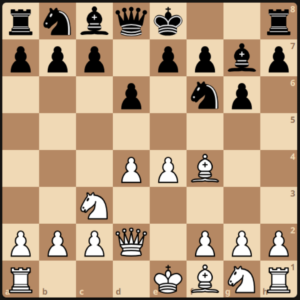
The position above is a variation of the London system that aims to neutralize black’s strategic ideas by trading the bishop on h6, getting rid of the fianchettoed bishop on g7.
White’s plan is to castle queenside and launch a future kingside attack; trading the dark-squared bishop, pushing g & h pawns, and opening the h-file are some of the basic ideas.
The game starts with the typical moves 1.d4 Bf6 2.Bf4 g6 3.Nc3 Bg7 4.e4 d6 5.Qd2 (preparing for the future move Bh6) a6 6..0-0-0 b5.
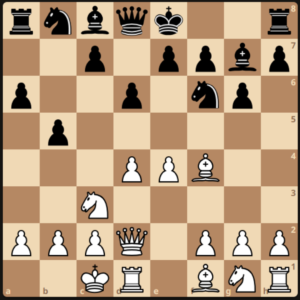
Position after 6 moves
The game continued 7.f3 Bb7.
Then, the bishops got traded 8.Bh6 Bxh6 9.Qxh6 and black developed his b-knight to d7.
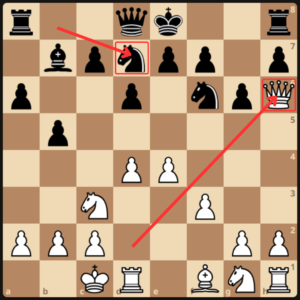
In this position, Black can’t castle kingside because of the queen guarding the dark square. The queen is also not developed yet.
GM Dlugy attacked the center with 10. e5, hitting the knight. Black moved his knight to d5. In this position, white has many attacking ideas (e6 – Qg7 and win a pawn).
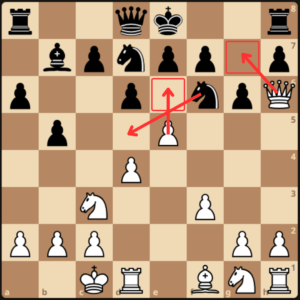
The game proceeded 11.e6 fxe6 12.Qg7 Rf8 saving the rook but leaving the h7 pawn hanging.
GM Dlugy traded the knight and captured on d5, black recaptured with Bxd5, and white grabbed the free pawn on h7.
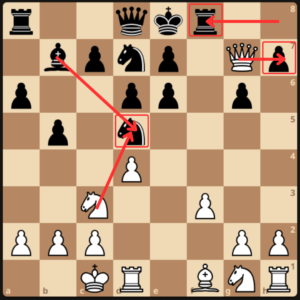
After 14.Qxh7, the g-pawn is now undefended. Black responded with Nf6 and GM Dlugy just grabbed the pawn, Qxg6+, and the opponent’s king just hid on d7.
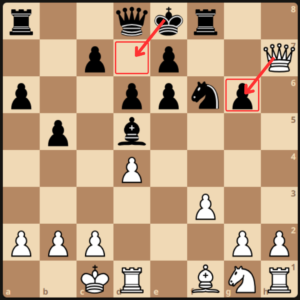
The game followed 16.Ne2, up a pawn and not worried of the a2 pawn (Bxh2 is met by b3).
16…c6 to solidify the pawn structure and white moved Nc3 to protect the a-pawn and develop the knight.
GM Dlugy’s plan is to eliminate black’s strong bishop on d5.
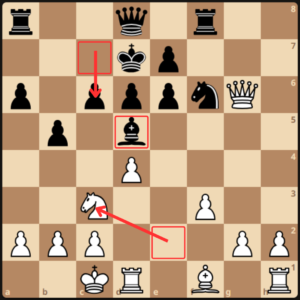
Black brought out his queen to a5, pressuring the a-pawn, but was quickly defended by Kb1.
GM Dlugy is preparing for Nxd5 if black plays b4, and that’s exactly what happened.
19.Nxd5 Nxd5 20.Bc4, white’s bishop came into play, stopping black’s potential threats while also eyeing on the pawn on e6.
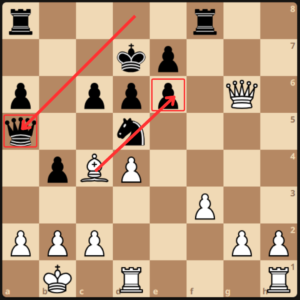
White’s endgame plan is to capture the knight and work on his 2 connected passers on the kingside.
Black has a threat of Nc3+ bxc3 bxc3, but after Ka1, Rd1, and Bb3, white king is safe.
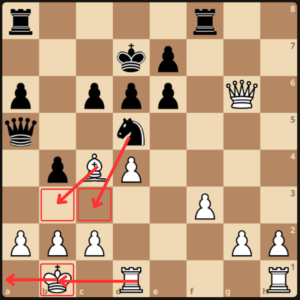
The opponent decided to play Rg8, attacking the queen and GM Dlugy repositioned his queen to e4, still putting pressure on the e-pawn.
Black then grabbed the g-pawn, and white replied with Rhe1, adding more attack to the e-pawn.
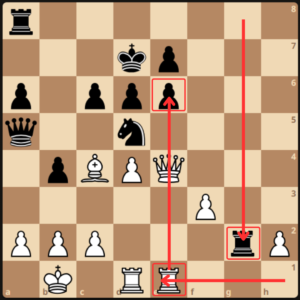
Black can’t defend the e-pawn with Rg6 because white’s queen is guarding that square.
Black moved his knight to c7 and GM Dlugy picked up the pawn with Bxe6+, Ke7, and picked up another pawn with Qxc6.
Short on time, black resigned though he could prolong the game with Qb5.

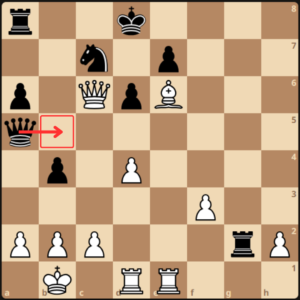
Summary
The Qd2-Bh6-h4 idea in the London System against the King’s Indian Defense is a potent weapon for White, aiming to weaken Black’s kingside and dark squares. Black can counter this plan by preventing the bishop exchange, creating counterplay in the center and queenside, and maintaining flexibility in their position. Proper handling of this maneuver requires understanding both the strategic aims and tactical possibilities in the resulting positions.
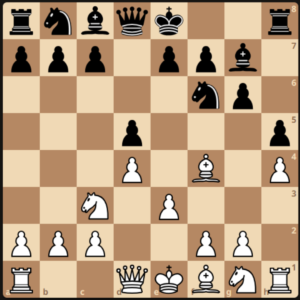
The position above shows how elite grandmasters play the King’s Indian Defense against the London System. Instead of the typical d6 move, d5 is played to challenge the center and control e4, and white’s h4 move is met by h5 to neutralize the attack.









